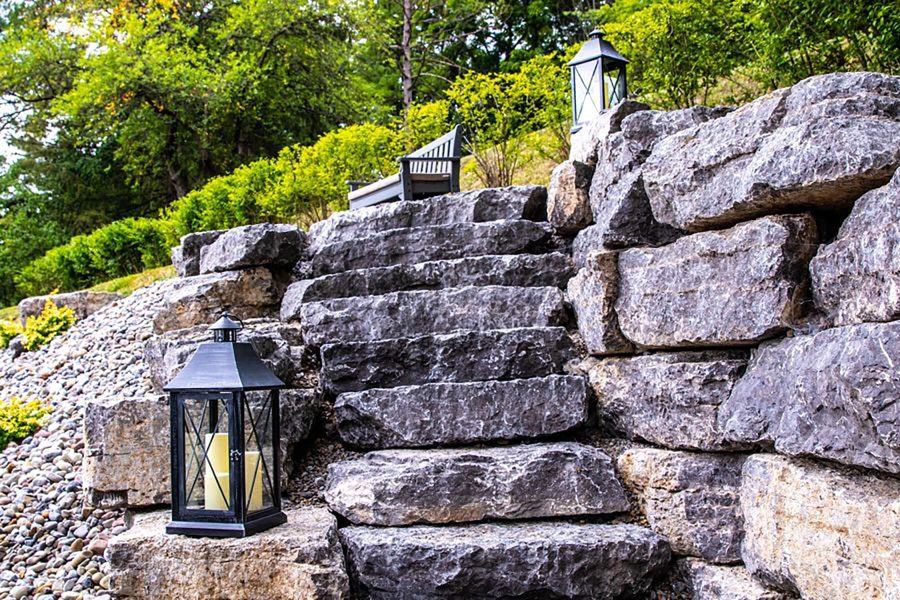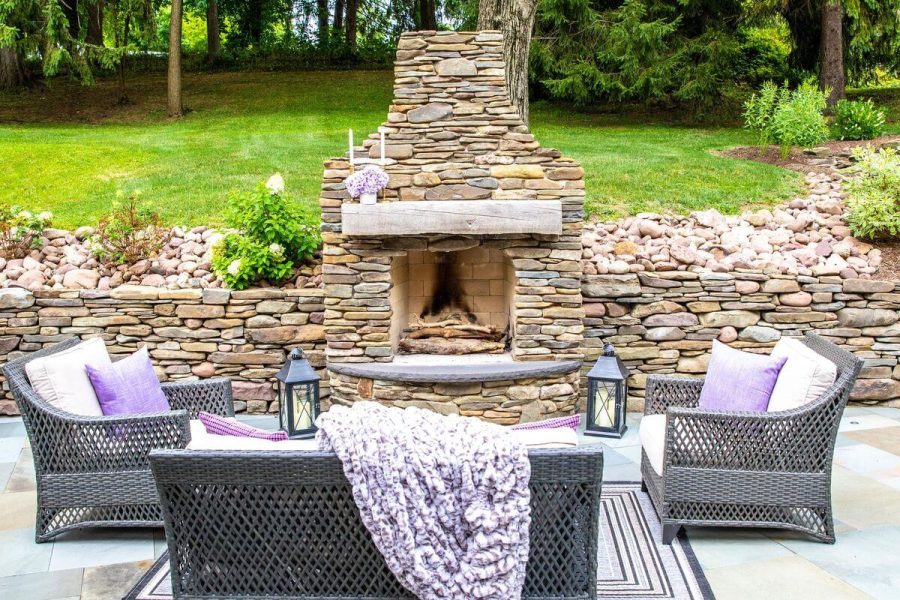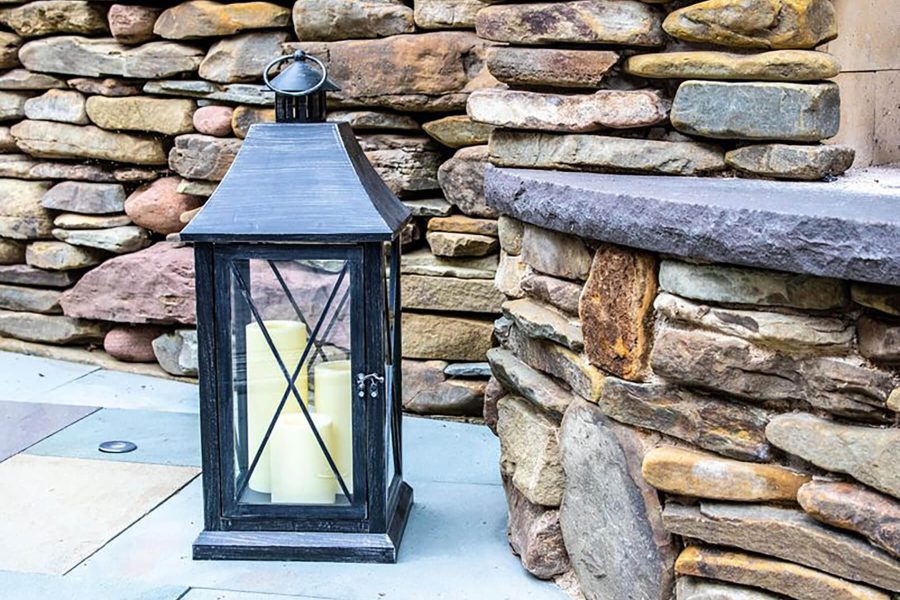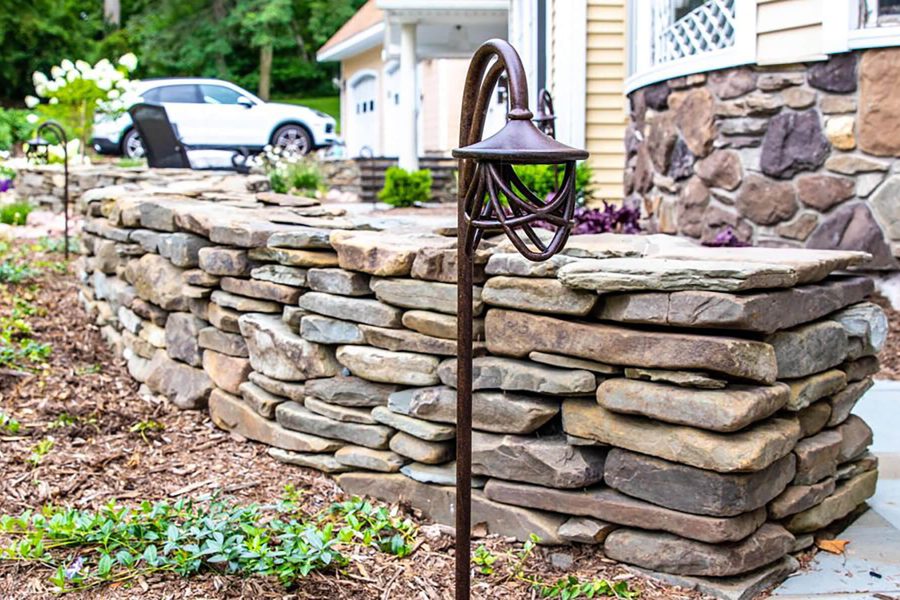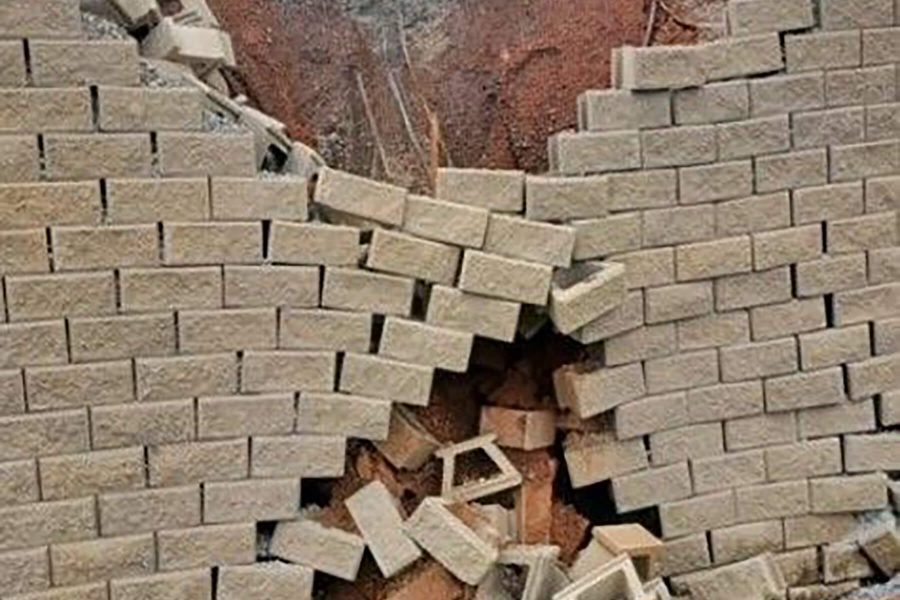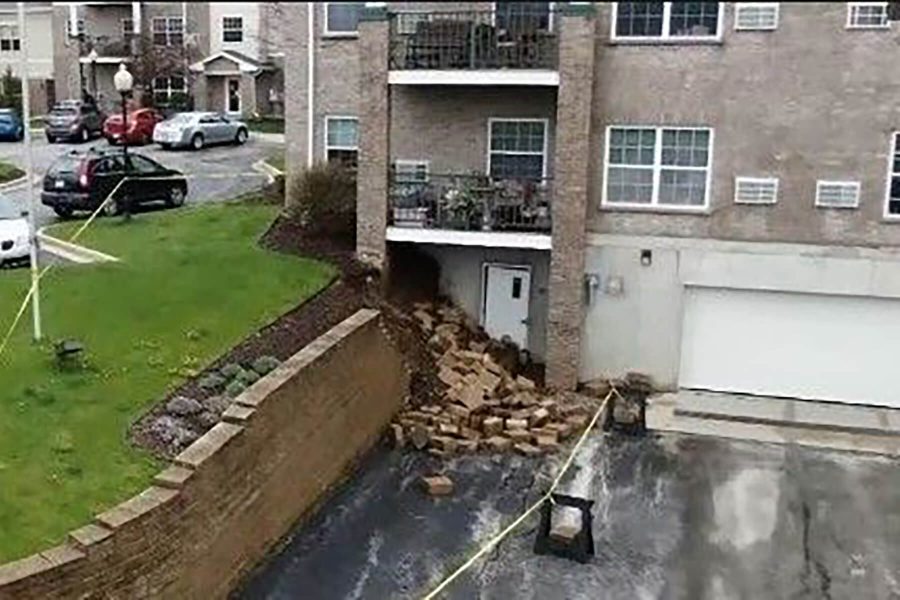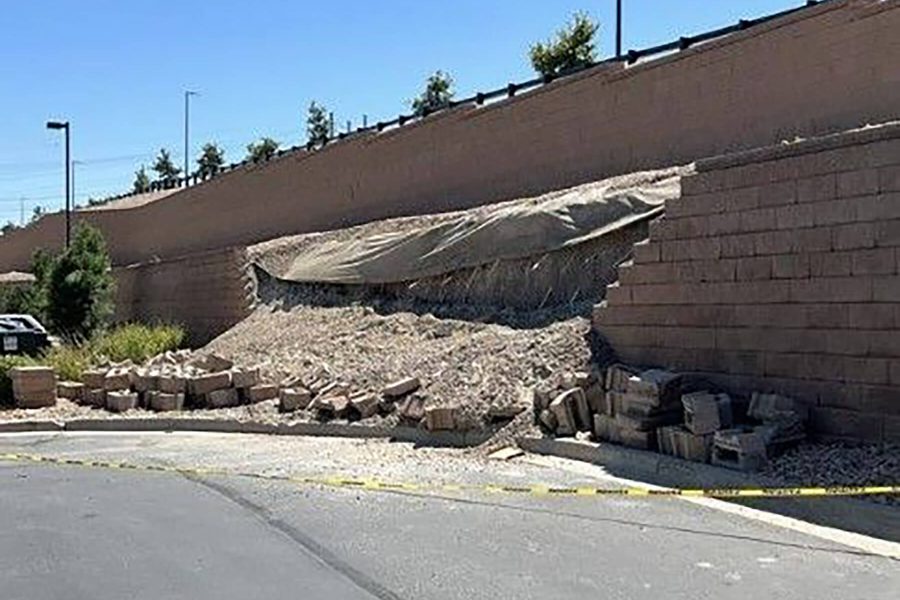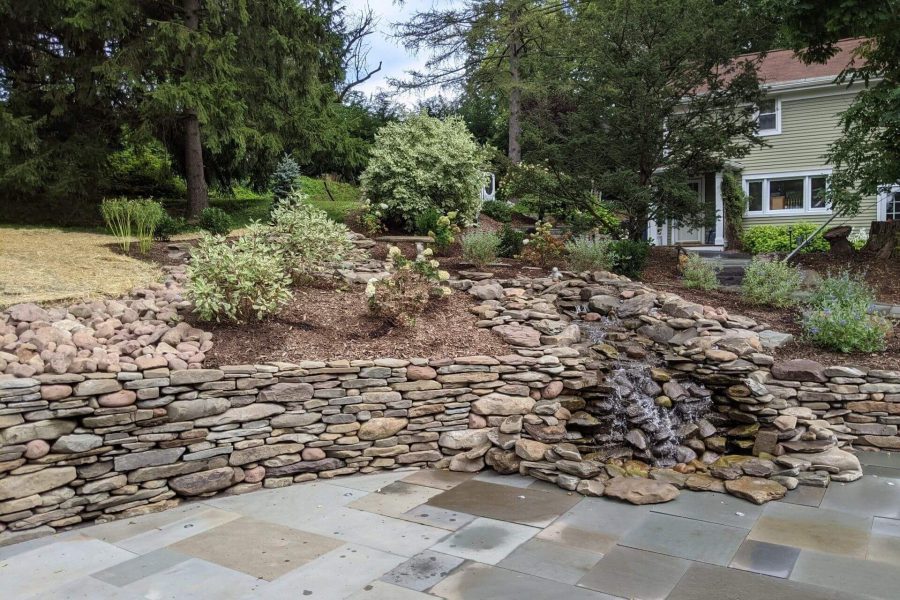The Ultimate Guide to Building Retaining Walls in Central New York
Whether it’s to create additional outdoor living space, prevent erosion, or simply add curb appeal, retaining walls can be a great addition to your home. But where do you start?
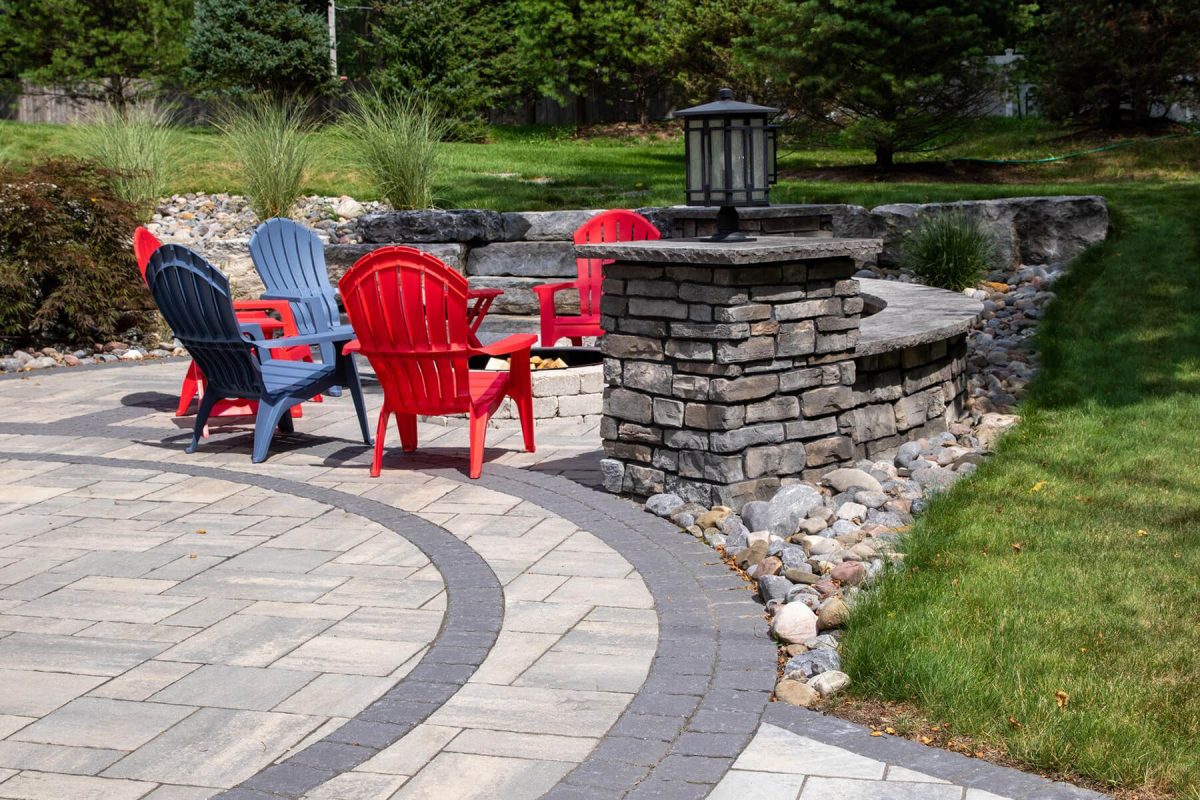
Our Ultimate Guide to Building a Retaining Wall in Central New York will walk you through the entire process, from planning and design to construction and maintenance. We’ll also provide tips on choosing the right materials and how to avoid common mistakes. So whether you’re a DIY’er or hiring a professional, our guide will help ensure that your project is successful.
Let’s get started!
What are retaining walls and what is their purpose?
A retaining wall is an armor of stone, brick, timber, or reinforced concrete that attempts to hold back land pressure and prevent soil erosion. Its primary purpose is to support the soil mass above it and direct the water away from hazardous areas like your basement or foundation. Building a retaining wall in Central New York is a great way to ensure you have a reliable solution against soil erosion and water-related issues. With the Ultimate Guide for Building a Retaining Wall in Central New York, you’ll have everything you need to create a secure retaining wall that will last for many years.
Planning Your Retaining Wall Design
The most important part of building a retaining wall is proper planning. Before you start digging, you need to consider the size and shape of your wall, the materials used, and any drainage considerations. You also want to make sure that the design is safe and complies with local codes or regulations.
Your retaining wall project based on its height could require professionally engineered plans to ensure proper construction. Consider reaching out to a team that specializes in retaining wall design to ensure all critical elements are considered and your investment is protected for years to come.
Choose the right location for your retaining wall
To ensure the success of your retaining wall project in Central New York, choosing the right location is key. Not only should you take into account the aesthetic needs of your landscape but also consider functionality. Proper site selection can help ensure that the wall is well-drained, Soil structure (type) should be analyzed to understand retention values which will assist in retaining soil and withstanding immense pressure. Additionally, (if required) building permits must be obtained before starting a project – so make sure you’ve taken care of that beforehand. With careful consideration of all these important factors, selecting the perfect spot for your retaining wall should be relatively straightforward.
Determine the size of your retaining wall
Before you begin building your retaining wall, it’s important to determine its size and shape. The dimensions of your wall will be determined by the space you have available, soil type and conditions, and the desired height for your structure that will achieve the intentions of your wall. It is also important to consider additional material needed such as fill soil, aggregate, or stone, which may be required for gradation changes or proper construction infill.
Your local professional can provide helpful guidance on determining the right size of your retaining wall for Central New York’s unique climate and terrain requirements.
***Your local professional should have proven construction knowledge and as a bonus, a certified member of the NCMA (National Concrete Masonry Association) organization. These credentials along with references will ensure you have made a proper choice in professionals to assist you in your project.
Select the material you will use to build your retaining wall
When building a retaining wall in Central New York, the first step is to carefully consider the materials you will use to build your wall. Some popular material options include natural stone, cinder/masonry block, poured concrete, timber, or most popular is the SRW (segmented retaining wall) block. Each material carries its own set of benefits and challenges, making it essential to evaluate each option before making a selection. Things to consider when selecting your materials include cost, durability, longevity, and certain aesthetics. Ultimately, selecting the right materials will ensure that your retaining wall is attractive, strong, and built to last for years to come.’
Waterfront or Lakefront Homes
If you’re considering a retaining wall for your lakeside home, other material choices are available to you for this application. One important item to mention is regulation by our local DEC (Dept. of Conservation). The DEC has requirements that must be met prior to construction as well as during construction. It is important to work with a company that has the experience & education that will assist you through this process.
Building Retaining Walls
Once you’ve chosen the right materials, it’s time to start building your retaining wall. Depending on the size and shape of your project, there are a few different methods you can use including preserved wood (pressure-treated lumber), masonry block walls, crib walls, large boulder walls, and gabion basket walls. It’s important to familiarize yourself with the different types of retaining walls available so you can select the best option for your structure.
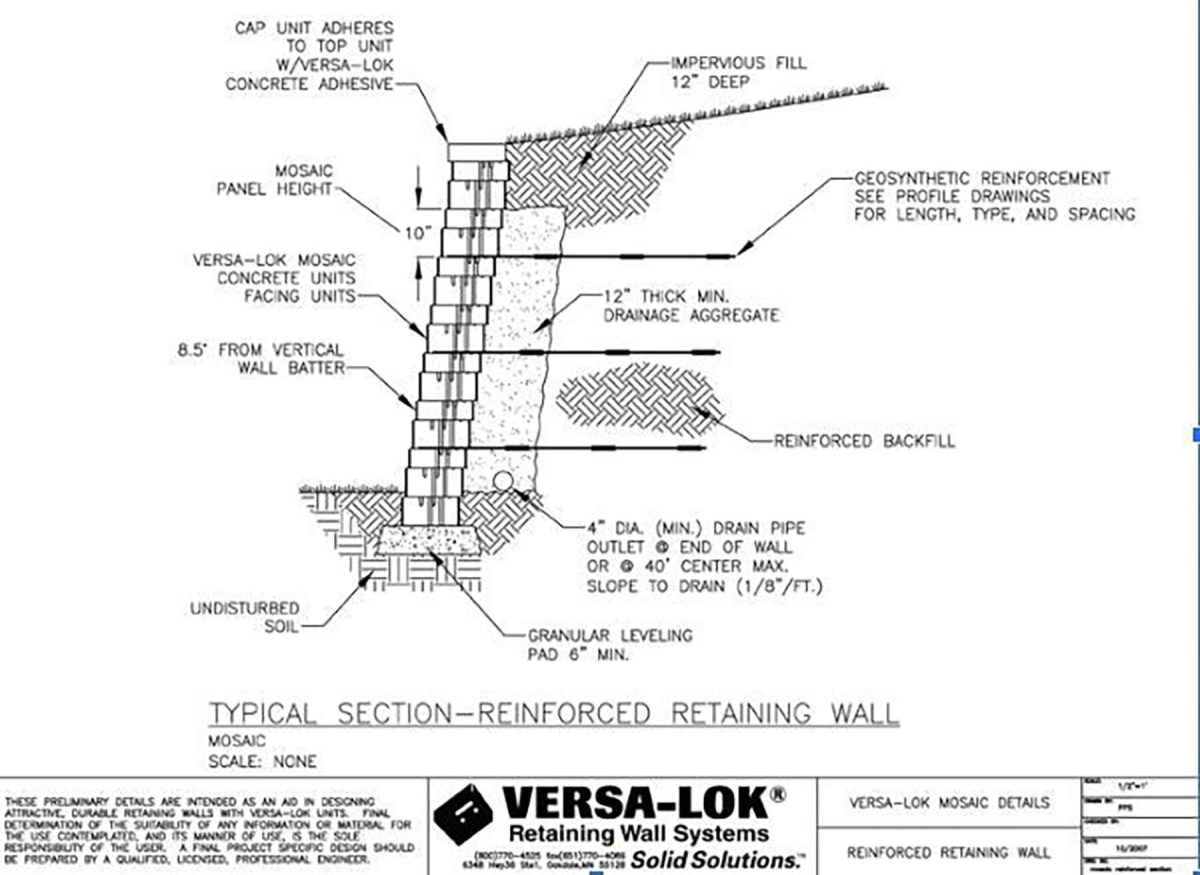
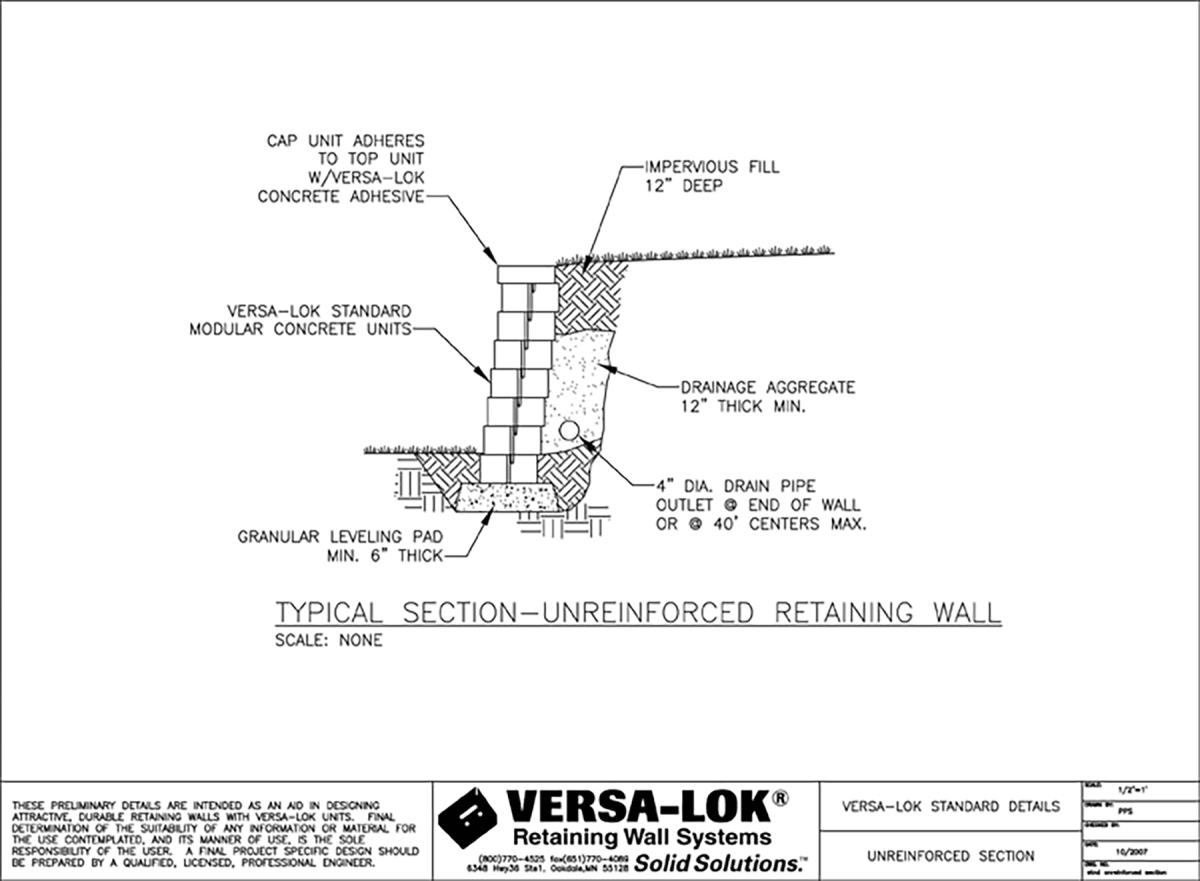
Build your retaining wall according to code
Building a retaining wall in Central New York requires a great deal of attention to detail and compliance with local code standards. These standards may vary from county to county, so be sure to do your research and familiarize yourself with the appropriate regulations. The National Concrete Masonry Association provides detailed steps for ensuring all aspects of your wall are compliant with general code requirements and can be referred to when selecting the design and layout of your wall and desired functions of the retaining wall chosen.
When designing a residential retaining wall, aesthetics should not be overlooked. Not only will your outdoor living spaces benefit from an attractive design but also helps you avoid trouble with code enforcement or unhappy neighbors.
Following the directions carefully or the directive of your chosen NCMA professional for safety protocols, maximum protection, and sustainable performance of your retaining wall.
Proper drainage systems
To ensure that water does not accumulate and damage your retaining wall, it’s essential to install a proper drainage system. The depth and width of the drain will depend on the soil conditions, slope, materials chosen, and outside water source influences (gutter downspouts, natural springs, and surface water runoff).
Proper water management will make the difference between a wall’s success or its failure. In fact, this is the number one reason for retaining wall failures.
Inspect your work and make sure everything is up to par
Although the building process of a retaining wall in Central New York is detailed and complex, it can prove to be extremely beneficial, providing stability against soil erosion and adding aesthetic value to the landscape. There are sequential steps that need to be followed as the wall is constructed. Maintaining proper compaction, use of proper aggregates, and reinforcement grids, and strong knowledge of building procedures and adhesive is just one of the many very important steps to a successful wall completion.
Common Mistakes to Avoid When Building a Retaining Wall
It’s easy to make mistakes when constructing a retaining wall, which can lead to costly repairs and additional maintenance needs down the line. To avoid any issues, here are some of the most common mistakes to keep in mind when building your wall:
- Underestimating the size of your wall: Make sure you take into consideration soil type, terrain, water concerns, property boundaries and other factors listed above when deciding on wall dimensions. Attempting to build a taller wall than what is recommended for your location can lead to a waste of resources, efforts, and potential for failure.
- Improperly laying the base: When laying the foundation for your wall, make sure you have provided proper excavation for width & depth. It must be level and compacted properly and proper wall construction procedures have to be, followed.
Retaining wall construction conclusion
Building a retaining wall in Central New York requires a great deal of patience, precision, and research. Taking the time to understand local regulations, select the right materials, and ensure a proper installation will provide you with a solid and attractive wall that will last. With adequate maintenance, your retaining wall should remain intact and provide you with optimal performance for many years.
Elements of a Beautiful Retaining Wall Design
Creating a beautiful retaining wall takes more than just haphazardly stacking blocks. It can only be achieved with careful attention to detail and an understanding of the elements of design. Natural stone is an essential material for constructing a captivating retaining wall; its natural warmth radiates in harmony with the natural environment, giving any yard instant charm and character. From the selection of natural stones, selection of size and color, to the proper placement – natural stone offers endless creative possibilities to construct a unique wall with identity. Whether you choose natural stone slabs all one size or mix sizes together, building with natural stone will result in an effortlessly beautiful retaining wall that will be the envy of your neighborhood.
Maintaining Your Retaining Wall
Once you have built your retaining wall, it’s important to maintain it properly. This will ensure that the wall remains structurally sound and aesthetically pleasing. Here are some steps you can take to properly maintain your retaining wall in Central New York:
Inspect regularly
Check your wall on a regular basis for any signs of damage or instability. With the proper construction of an engineered, professionally built retaining wall, there will be very little to be concerned with. Ground conditions change and unknown situations can occur that could/may affect the wall. Regular check-ups of the wall are an invaluable proactive approach to managing any potential problems.
Signs of Failure
Retaining wall units or Segmented Retaining Walls(SRW), have joints created by each unit being side by side. Indicators that the current retaining wall is failing:
- The retaining wall has a “lean” to it. The wall is leaning in the wrong direction, toward the area it should be retaining
- The wall face is saturated, perpetually wet, and has a white crusty paste throughout the face
- The wall face is bulging (protruding) or an area has drooped or settled
- SRW units are not touching at joints. There appear to be larger gaps between joints
If you see any of these signs, it is time to intervene.
Repair any damages immediately
If you notice any damage to the wall, repair it as soon as possible, before the issue becomes worse. Contact the contractor who built the wall or if your wall a DIY, then consult with a local professional for repairs/replacement.
Remove debris from behind the wall
Make sure to clear away leaves, twigs, and other debris periodically from the area behind your retaining wall. This will help prevent water accumulation and soil erosion.
The Disastrous Effects of Unsound Retaining Walls
A poorly designed retaining wall can lead to disastrous consequences. Inadequate drainage, an improper foundation, and incorrect materials can cause the wall to collapse or lean over time due to soil erosion and the weight of water-saturated soil behind it. This could potentially damage neighboring properties and put lives at risk.
In addition, a structurally unsound wall can also lead to high repair costs. Improperly installed walls may require the services of a professional engineer in order to make sure that any repairs are done safely and correctly.
Building a retaining wall is an important undertaking and one that should not be taken lightly.
By taking the necessary steps, you can ensure your retaining wall will not only enhance the look of your property but also provide a safe and secure barrier for years to come. With proper planning and maintenance, your retaining wall will not only be aesthetically pleasing but also structurally sound.
Our expert landscape design team is Certified by NCMA (National Concrete Masonry Association) and we have over 40 years of experience in retaining wall design and construction in the Syracuse and Central New York area. For a free consultation regarding an existing retaining wall or to discuss building a new retaining wall in the Central New York area, please click here or reach out to us directly at (315) 623-3564.
